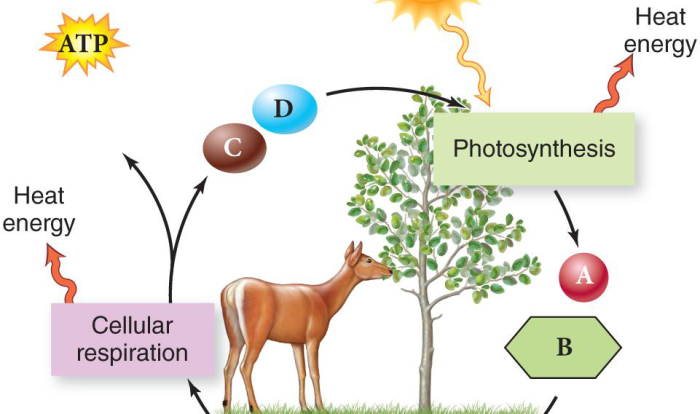Unveiling the intricacies of life’s building blocks, the cells tissues organs systems worksheet embarks on an educational odyssey, inviting learners to delve into the fascinating realm of biology. Through a meticulously crafted blend of theoretical knowledge and interactive activities, this worksheet empowers students with a comprehensive understanding of the fundamental units of life and their intricate organization.
Commencing with the microscopic world of cells, the worksheet illuminates their structure and functions, highlighting the vital role of organelles in cellular processes. It then explores the concept of tissue organization, showcasing how cells collaborate to form specialized tissues with distinct characteristics.
The journey continues with an examination of organs, their composition from tissues, and their specific functions within the body.
Cell Structure and Function
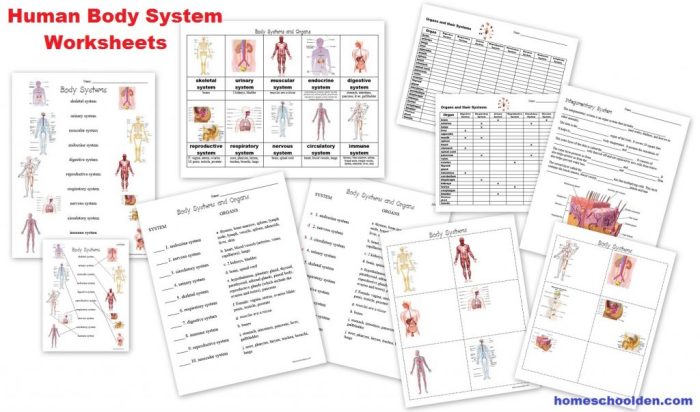
Cells are the basic units of life. They are responsible for all the functions of life, including metabolism, growth, reproduction, and response to stimuli.
The basic structure of a cell includes the cell membrane, cytoplasm, and nucleus.
Cell Membrane, Cells tissues organs systems worksheet
- The cell membrane is a thin layer of lipids that surrounds the cell.
- It protects the cell from its surroundings and regulates the movement of materials into and out of the cell.
Cytoplasm
- The cytoplasm is the gel-like substance that fills the cell.
- It contains all the organelles of the cell, which are small structures that perform specific functions.
Nucleus
- The nucleus is a large organelle that contains the cell’s DNA.
- DNA is the genetic material that controls the cell’s activities.
Cell Organelles
- Mitochondria are small organelles that produce energy for the cell.
- Ribosomes are small organelles that produce proteins.
- Endoplasmic reticulum is a network of membranes that folds and transports proteins.
Types of Cells
- Epithelial cells are cells that line the surfaces of the body.
- Muscle cells are cells that contract to produce movement.
- Nerve cells are cells that transmit electrical signals.
Tissue Organization
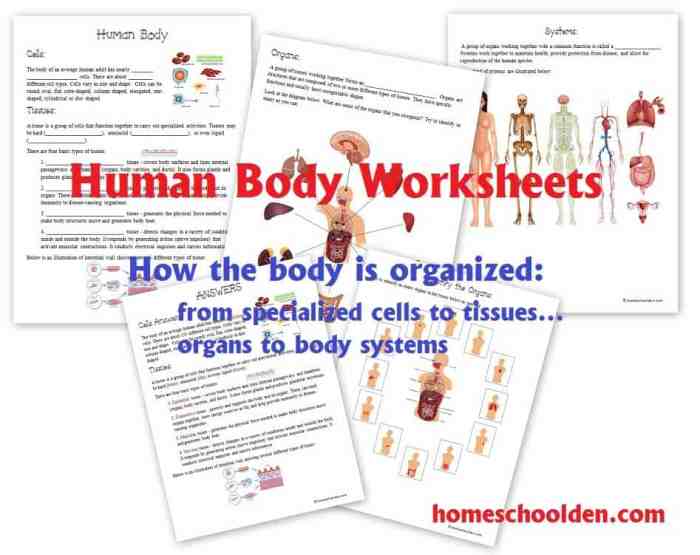
Tissues are groups of cells that perform a specific function.
There are four main types of tissues:
Connective Tissue
- Connective tissue supports and connects other tissues.
- It includes bones, cartilage, and tendons.
Muscle Tissue
- Muscle tissue contracts to produce movement.
- It includes skeletal muscle, smooth muscle, and cardiac muscle.
Nervous Tissue
- Nervous tissue transmits electrical signals.
- It includes neurons and glial cells.
Epithelial Tissue
- Epithelial tissue lines the surfaces of the body and protects them from the environment.
- It includes skin, mucous membranes, and the lining of the digestive tract.
Organ Structure and Function: Cells Tissues Organs Systems Worksheet
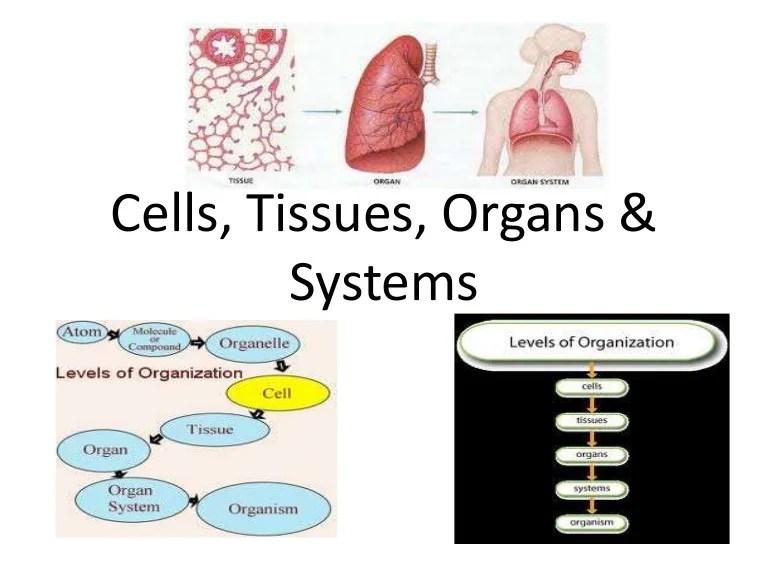
Organs are groups of tissues that perform a specific function.
Some examples of organs include the heart, lungs, brain, and stomach.
Heart
- The heart is a muscular organ that pumps blood throughout the body.
- It is composed of four chambers: the right atrium, the right ventricle, the left atrium, and the left ventricle.
Lungs
- The lungs are two large organs that are responsible for breathing.
- They are composed of millions of tiny air sacs called alveoli.
Brain
- The brain is the control center of the body.
- It is composed of billions of neurons.
Stomach
- The stomach is a muscular organ that digests food.
- It is lined with a thick layer of mucus that protects it from the acidic contents of the stomach.
Organ System Function
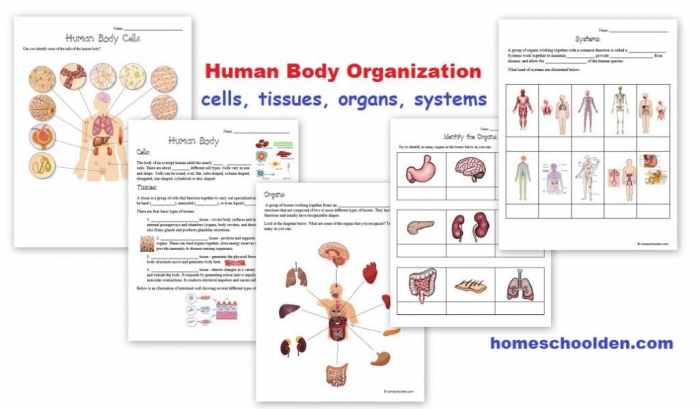
Organ systems are groups of organs that work together to perform a specific function.
Some examples of organ systems include the circulatory system, respiratory system, nervous system, and digestive system.
Circulatory System
- The circulatory system transports blood throughout the body.
- It is composed of the heart, blood vessels, and blood.
Respiratory System
- The respiratory system is responsible for breathing.
- It is composed of the lungs, trachea, and bronchi.
Nervous System
- The nervous system is the control center of the body.
- It is composed of the brain, spinal cord, and nerves.
Digestive System
- The digestive system is responsible for digesting food.
- It is composed of the mouth, esophagus, stomach, small intestine, large intestine, and rectum.
FAQ Resource
What is the primary objective of the cells tissues organs systems worksheet?
To provide students with a comprehensive understanding of the structure, function, and organization of living organisms, from the cellular level to complex organ systems.
How does the worksheet facilitate student learning?
Through a combination of clear explanations, engaging activities, and thought-provoking questions, the worksheet encourages active participation and deepens comprehension.
What types of activities are included in the worksheet?
The worksheet incorporates a variety of activities, such as cell identification, tissue classification, organ dissection, and system analysis, to reinforce learning through hands-on experiences.
